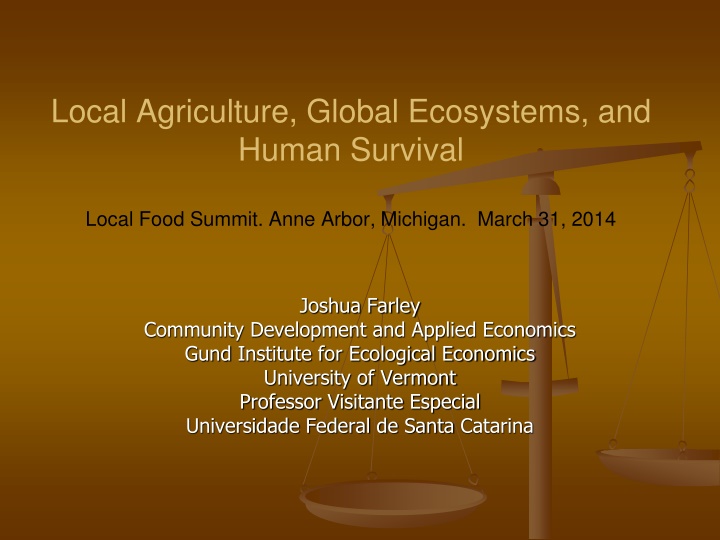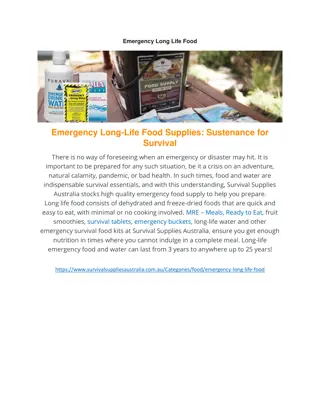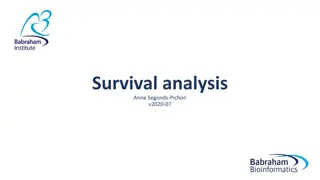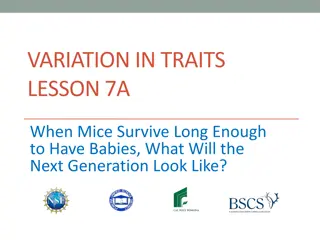
Local Agriculture, Global Ecosystems, and Human Survival Summit Insights
Explore the intersection of local agriculture, global ecosystems, and human survival through the lens of environmental economics, resource thresholds, and market solutions. Delve into the importance of essential resources, ecological thresholds, and the role of local agriculture in sustainable practices and economic efficiency.
Download Presentation

Please find below an Image/Link to download the presentation.
The content on the website is provided AS IS for your information and personal use only. It may not be sold, licensed, or shared on other websites without obtaining consent from the author. If you encounter any issues during the download, it is possible that the publisher has removed the file from their server.
You are allowed to download the files provided on this website for personal or commercial use, subject to the condition that they are used lawfully. All files are the property of their respective owners.
The content on the website is provided AS IS for your information and personal use only. It may not be sold, licensed, or shared on other websites without obtaining consent from the author.
E N D






















